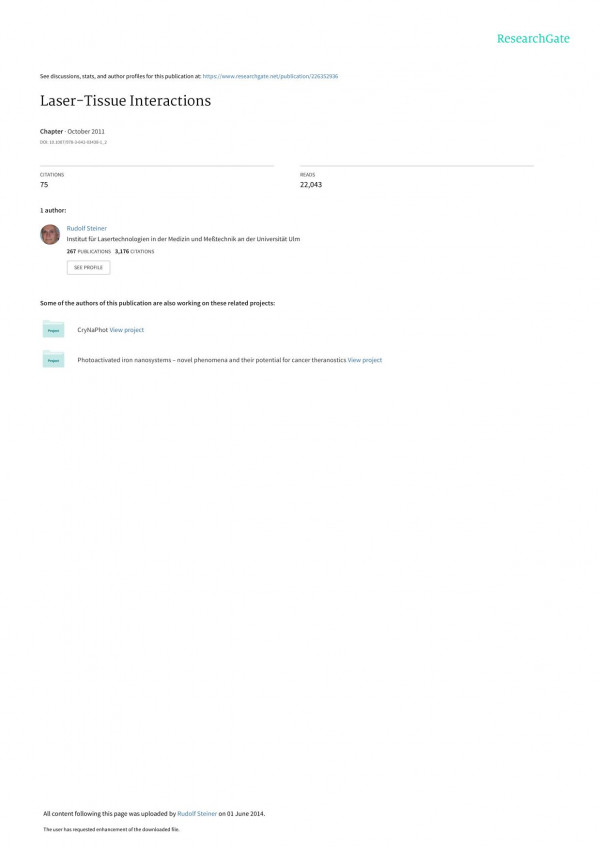

Most ebook files are in PDF format, so you can easily read them using various software such as Foxit Reader or directly on the Google Chrome browser.
Some ebook files are released by publishers in other formats such as .awz, .mobi, .epub, .fb2, etc. You may need to install specific software to read these formats on mobile/PC, such as Calibre.
Please read the tutorial at this link: https://ebookbell.com/faq
We offer FREE conversion to the popular formats you request; however, this may take some time. Therefore, right after payment, please email us, and we will try to provide the service as quickly as possible.
For some exceptional file formats or broken links (if any), please refrain from opening any disputes. Instead, email us first, and we will try to assist within a maximum of 6 hours.
EbookBell Team

4.4
62 reviewsThis book has emerged from the need for a comprehensive presentation of the
recently established field of laser–tissue interactions. So far, only publications
dealing with specific issues and conference proceedings with contributions by
several authors have been available for this subject. From these multi-author
presentations, it is quite difficult for the reader to get to the bottom line of
such a novel discipline. A textbook written by a single author is probably
better suited for this purpose, although it might not provide the reader with
all the details of a specific application.
The basic scope of the book was outlined during several lectures on
biomedical optics which I held at the University of Heidelberg in the years
1992–1995. I have tried to include the most significant studies which are related
to the field of laser–tissue interactions and which have been published
during the past three decades. This comprises the description of experiments
and techniques as well as their results and the theoretical background. Some
parts of this book, especially the detailed discussion of ultrashort laser pulses,
are naturally influenced by my own interests.
Due to the rapidly increasing number of medical laser applications, it is
almost impossible to present a complete survey of all publications. Thus, this
book will mainly serve as a starting guide for the newcomer and as a quick
reference guide for the insider. For discussion of the newest techniques and
results, the reader should consult the latest issues of scientific journals rather
than a textbook. Regular coverage is provided by the journals Lasers in
Surgery and Medicine, Lasers in Medical Science, Biomedical Optics, and the
SPIE Proceedings on Biomedical Optics. Apart from these, related articles
frequently appear in special issues of other journals, e.g. Applied Physics B
and the IEEE Journal of Quantum Electronics, as well.